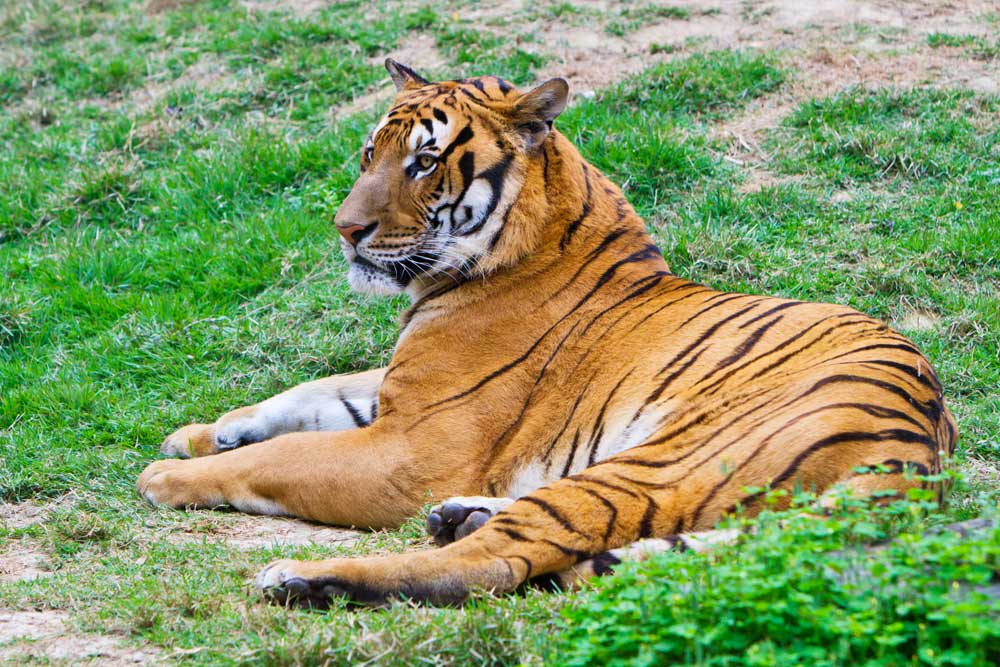Gallery: Tiger Species of the World
The Tiger Family

The beautiful and regal tiger (Panthera tigris) has nine current subspecies, three of which are extinct. Here are the six species that remain — all of which are endangered or critically endangered, according to the International Union for the Conservation of Nature (IUCN) Red List. This photo of two Sumatran tiger cubs taking a rest was taken on Oct. 5, 2010.
Sumatran Tiger

The Sumatran tiger (Panthera tigris sumatrae) is named so because it can only be found on the Indonesian island of Sumatra. There are about 400 to 500 of the tigers left, according to the U.S. Fish and Wildlife Service. Tigers are the world's largest cat, and the Sumatran tiger is smallest of all living tiger subspecies.
Bengal Tiger

The Bengal tiger (Panthera tigris tigris), also known as the Royal Bengal tiger, is primarily found in India and Bangladesh but also lives in Nepal, Bhutan and Burma. The most common subspecies of tiger, the Bengal tiger is also the second largest of all living tiger subspecies. Their orange coat can have brown or black stripes, with each cat having its own unique striping patterns — similar to how no two humans have the same fingerprints.
Endangered Beauty

The critically endangered Sumatran tiger possesses the darkest coat of all tigers. Its broad, black stripes are closely spaced and often doubled, and unlike the Siberian tiger, it has striped forelegs.
White Bengal Tiger

A Bengal tiger's orange coat can have brown or black stripes, with each cat having its own unique striping patterns — similar to how no two humans have the same fingerprints. This photo of a white Bengal tiger was taken on March 17, 2010. Its striking white coat is caused by a double recessive allele in its genetic makeup, and occurs naturally only once in every 10,000 births.
Indochinese Tiger

Also known as the the Corbett's tiger, the Indochinese tiger (Panthera tigris corbetti) is found in areas of Cambodia, Laos, Burma and Thailand. Their hides are a darker shade of orange than other subspecies of tigers, and their stripes act as camouflage to help the tigers hide from their prey.
Malayan Tiger

The Malayan tiger (Panthera tigris jacksoni) was only identified as a separate subspecies from the Indochinese tiger in 2004. Although very similar to the Indochinese tiger, the Malayan tiger is smaller in size. It is found exclusively in the moist subtropical forests in the southern tip of Thailand and peninsular Malaysia in Southeast Asia, according to Panthera, Inc.
Sign up for the Live Science daily newsletter now
Get the world’s most fascinating discoveries delivered straight to your inbox.
Siberian Tiger

The Siberian tiger (Panthera tigris altaica), also known as the Amur tiger, is the largest of the tiger subspecies. Wild Siberian tigers are found in the Primosky and Khabarovski Krais areas of the Russian Far East, with another small population of about 35 individuals occurring on the Russia-China border. They can weigh up to 660 pounds (300 kilograms), with the males growing up to more than 10.5 feet (3.3 meters) from head to tail. This photo shows brother and sister Siberian tiger cubs playing hide and seek.
Bengal-Siberian Mix

This tiger cub, playing in its enclosure, is of mixed Bengal and Siberian parentage. Siberian tigers have paler orange fur than other tiger subspecies and brown instead of black stripes. Their fur is thicker than that of tigers that live in southern Asia to accommodate for cold winter conditions.
South China Tiger

Found in central and eastern China, the critically endangered South China tiger (Panthera tigris amoyensis) is nearing extinction. There are currently 47 South China tigers living in 18 zoos in China, according to the World Wildlife Fund. Exact numbers of wild South China tigers, if there are any left, are unknown. This photo of a South China tiger was taken on April 5, 2011.










